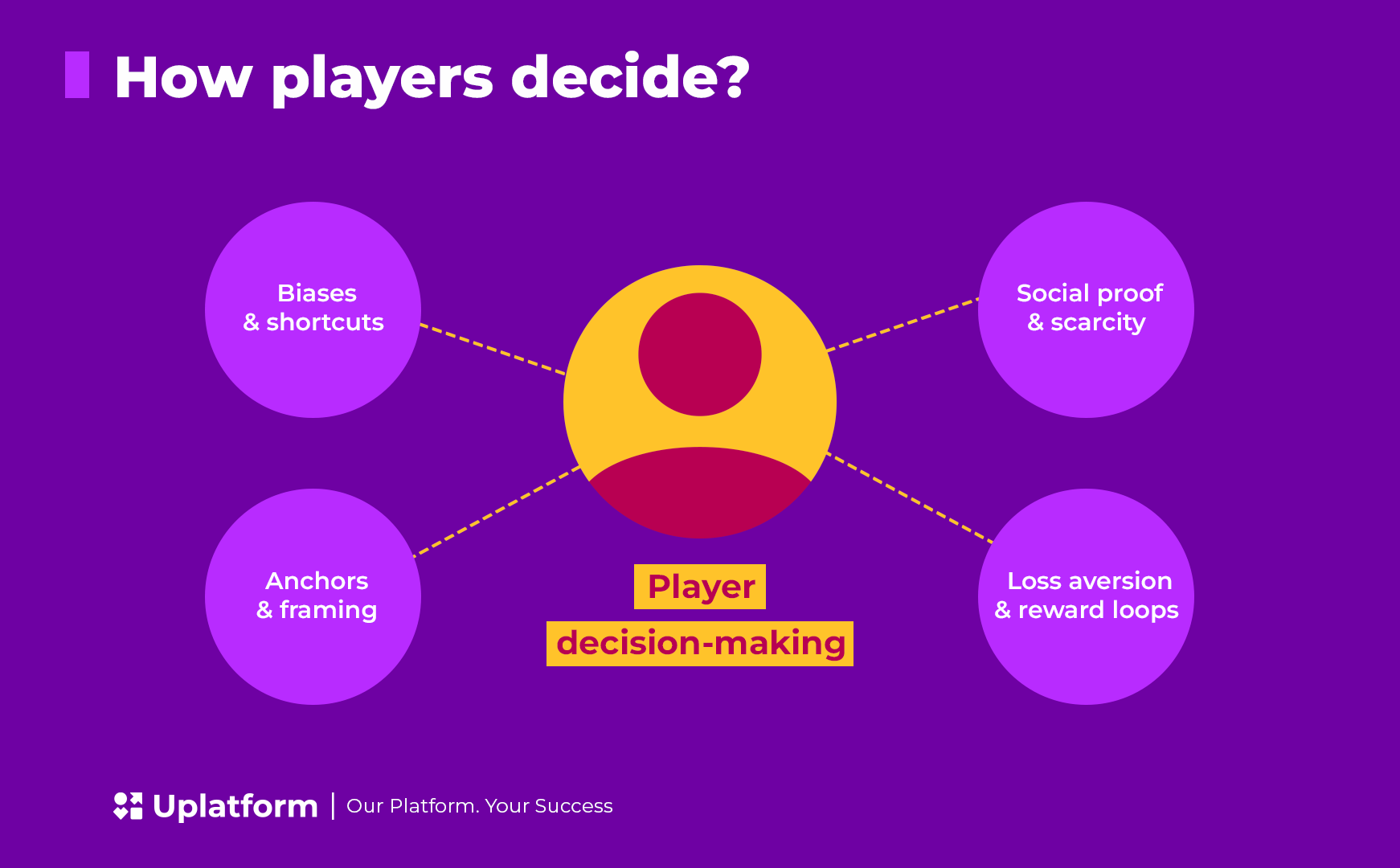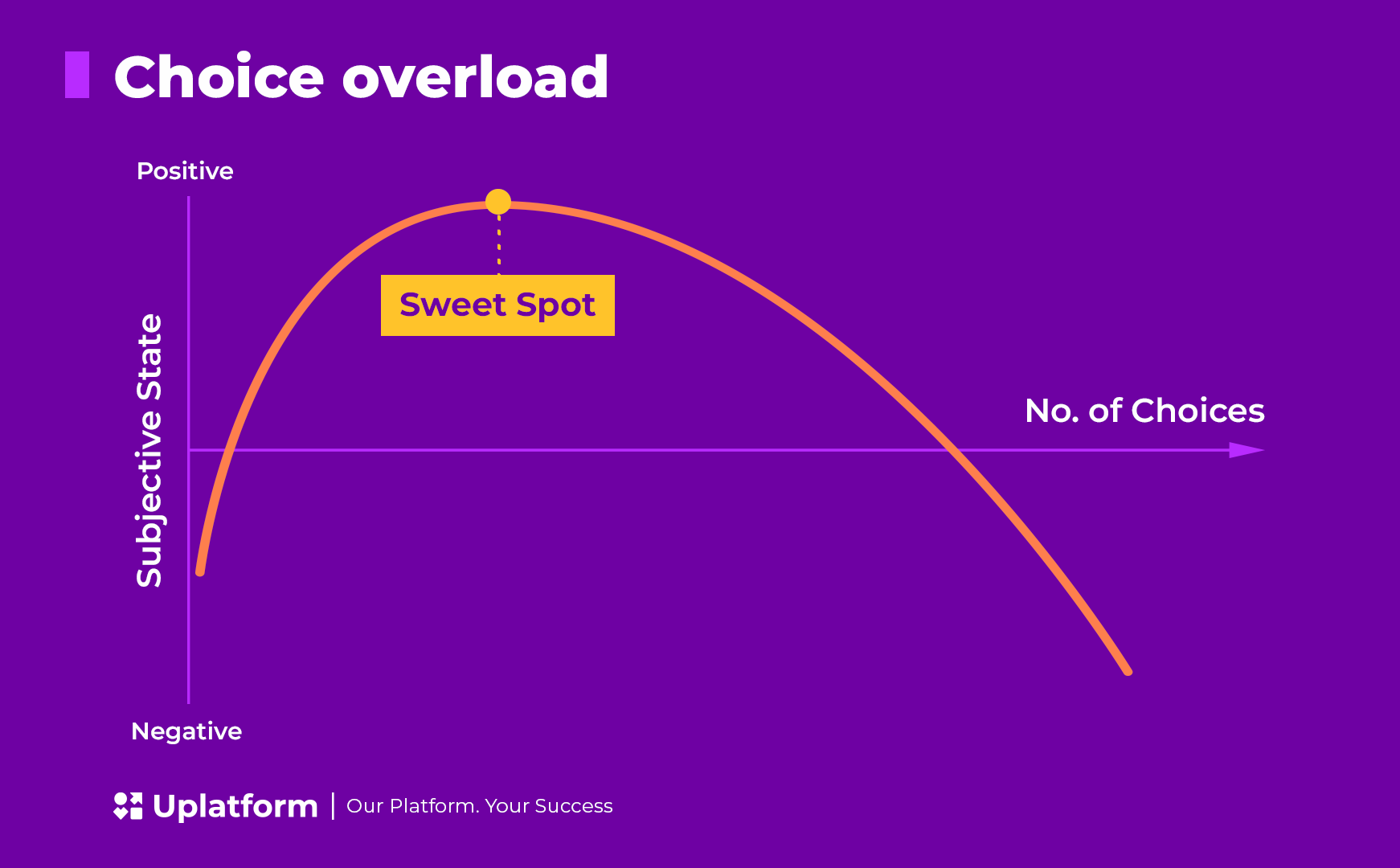Behavioural economics explains why players make decisions emotionally rather than logically. Uplatform demonstrated how these psychological principles translate into practical engagement, retention, and safer play strategies. The focus was on relevance, personalization, trust, loss aversion, and responsible design. Operators saw how aligning behavioural insights with smart technology leads to stronger loyalty and measurable business results.
To start off, players don’t make choices rationally. Classical economics imagines people carefully weighing costs and benefits, but in reality, we’re guided by bias, shortcuts, and emotion. Kahneman and Tversky proved it decades ago, and nowhere is this truer than in iGaming, where decisions are fast, repetitive, and deeply emotional.

In iGaming, behaviour is the business. Every design choice, offer, and message shapes how players act and feel. When behavioral insights guide design and CRM, results follow: higher revenue, stronger loyalty, and safer, more sustainable play. Understanding psychology isn’t theory – it’s the foundation of lasting success.
Choice overload is real
Too much choice doesn’t empower players — it overwhelms them. Research shows conversion rates can jump nearly tenfold when assortments shrink from thousands to just a handful. In iGaming, endless lists of games, events, or payment methods often create friction instead of engagement. Thus, smart UI/UX and personalisation are a must.

Think of it like entering a jungle with 10,000 paths — you’re more likely to get lost than to explore. A curated, well-marked trail keeps players moving forward.
- Geo-sensitive content sorting across sports, casino games, and payments – ensuring players always see the most relevant options for their region.
- Customisation and flexibility – for example, Uplatform allows players to tailor their line, selecting only the sports and events they care about.
- Dynamic widgets such as Top Games, Favourites, and Recommendations that highlight what’s trending and personally relevant.
- Clean, intuitive UI and thoughtful navigation – designed for your market and aligned with local player expectations and habits.
As Eduard Ammosov, Uplatform’s Business Development Manager for Payments, explains: “For multi-geo operations, relevance is everything. Players trust what feels familiar – that’s where conversions begin.”
Once players are exploring, the next question is how their perceptions are shaped. That’s where anchors and framing come into play.
Social proof & scarcity: powerful but delicate
Social proof and scarcity are among the most reliable motivators in behavioural economics. But there’s a fine line between motivating and manipulating. Keep it honest. Keep it subtle. And always test. A/B results should prove impact without undermining trust. In a market where credibility is everything, trust is your strongest currency. Trust also ties directly into how players experience wins and losses – and here, the imbalance is striking.
Loss aversion and the unpredictability of rewards
Players feel losses about twice as strongly as equivalent gains. That psychological imbalance explains why certain tools resonate so powerfully:
- Cashback framing: returning a portion of losses helps players feel supported and softens the emotional impact of losing.
- “Second-chance bets”: offering another shot at winning taps into players’ optimism and keeps engagement flowing after a miss.
- Reality checks and cool-offs: these guardrails protect players from chasing losses into a spiral.
Large-scale operator experiments confirm that loss-aversion framing shapes behaviour across iGaming verticals, from slots to sports, in measurable ways. And loss aversion doesn’t stand alone; it interacts with reward cycles and volatility patterns across different products.
iGaming thrives on unpredictability. Near-misses, surprise wins, and uncertain timing spark deep reward pathways in the brain. It’s what keeps players engaged – but also why safeguards matter. Transparency, well-placed limits, and timely breaks keep that excitement sustainable. In the long run, operators who balance thrill with protection build stronger loyalty than those who push players too far.
Personalization = retention
McKinsey research shows companies that personalise effectively generate ~40% more revenue from those efforts. In iGaming, where global active retention hovers around 70% (and lower in the U.S.), personalisation is the difference between keeping and losing players.
The best operators:
- Segment early: by stake, recency, vertical preference and other means.
- React fast: re-engaging within 24 hours of churn risk recovers far more value than waiting a week.
- Streamline payments: friction in deposits or withdrawals silently drives churn.
Retention isn’t about “more games.” It’s about smarter personalisation — better decisions delivered at the right moment and in the right way. When guided responsibly, personalisation not only retains players, it protects them.
Where Uplatform stands
Uplatform treats behavioural insights as a practical foundation rather than theory. The company applies years of operational experience to develop tools that reflect real patterns in player decision-making. Its platform incorporates features designed to improve engagement, strengthen retention, and support safer play across different markets and verticals.
Uplatform builds its platform around a clear understanding of how players make decisions, supported by deep experience and reliable, well-tested solutions.
Closing: the juicy results
Behavioural economics isn’t about tricking players. It’s about designing around how people really decide – biased, emotional, human.
Operators who embrace that reality reduce harm, build trust, and keep players coming back. With the right partner, they can do it consistently – and measurably.




